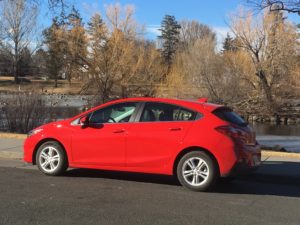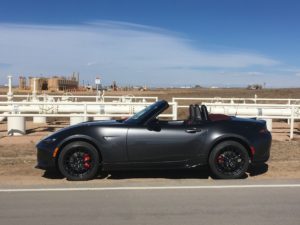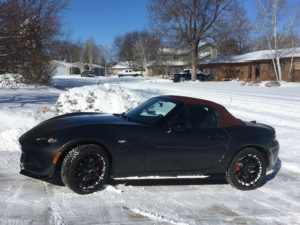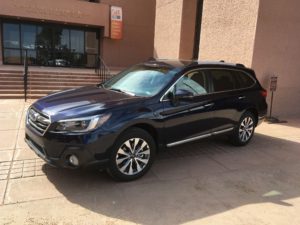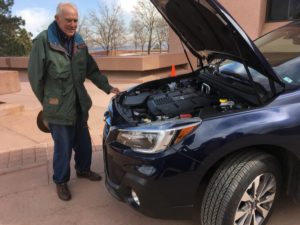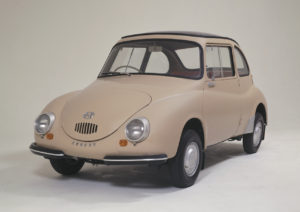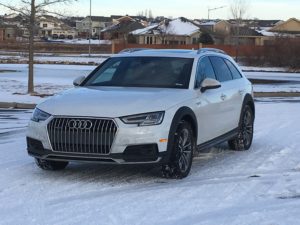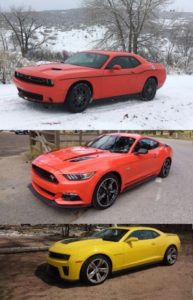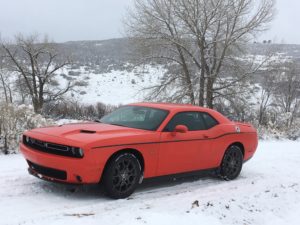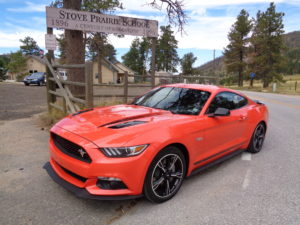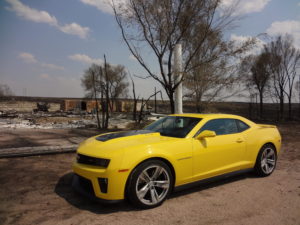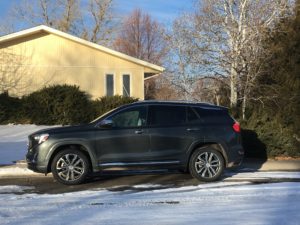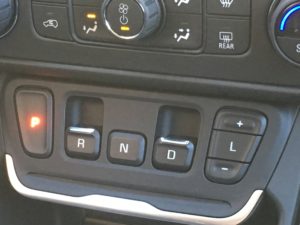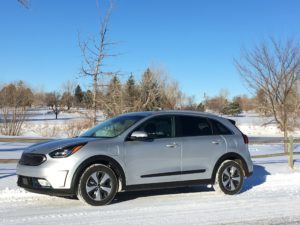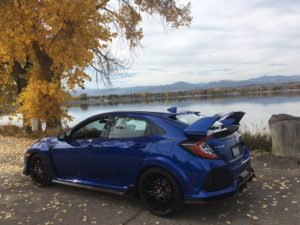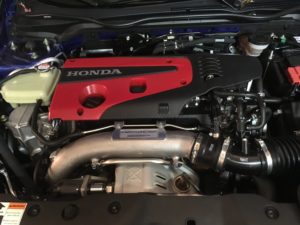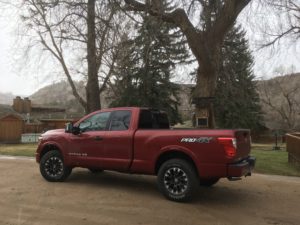
Jan and I took a couple hours out of a wet and cold afternoon and, in a 2018 Nissan Titan 4X4, headed west on U.S. 34.
Just this side of the Dam Store at the opening of the Big Thompson Canyon, which is closed for road and stream work, I guided the Titan on a short right, down the hill into the Sylvan Dale Ranch.
We did some twists and turns on narrow dirt roads before pulling up into a parking area outside the ranch’s main office building, where we took time to photograph the cayenne red pickup.
The Titan is equipped with the offroad-oriented Pro-4X endurance and enhancement packages, including shift-on-the-fly four-wheel-drive system, Bilstein performance shocks, skid plates, utilitrack bed with four tiedown cleats, electronic tailgate lock and extendable tow mirrors with puddle lamps.
I remember riding up there as a kid from Wray many years ago with my mother, who was delivering my sister, Norma Jane, and two or three of her friends there for a week of First Christian Church summer camp. Sylvan Dale today is a guest ranch.
The half-ton Titan stands tall and its step-in height is just short of 2 feet. A handy grab handle at each of the four doors assists in access and egress. Best, of course, would be a step rail, but this review model had none.
The Titan, built in Canton, Ohio, for Japanese-based Nissan, was named Truck of the Year at the recent Denver Auto Show at the Colorado Convention Center. Selection was by the Rocky Mountain Automotive Press.
It’s labeled as the Titan Pro-4X 4X4 King Cab. King Cab seems to me a misnomer for this truck, which uses rear-hinged back doors that require opening of the front door to gain access to the latch release for opening the rear. An advantage to a rear-hinged door, though, is that it can be opened to a much wider degree than a traditional four-door.
The 5.6-liter V-8 is a workhorse engine, with 390 horsepower and 394 lb.-ft. of torque. It’s a pleasure to drive, though it averaged only 15.2 miles per gallon of fuel usage. It rides on General Grabber 275/70R18 tires.
Since its introduction into the U.S. in 2003, the Titan has been a distant last in sales among the six full-sized pickups. A restyle for 2017, along with expanded underhood offerings, sent sales climbing from 21,000 in ’16 to 50,000 last year. Still last, but a bit more respectable.
The gasoline-powered V-8 is tied to a 7-speed automatic transmission and an electronic switch on the dash moves the transfer case from two-wheel drive to 4-Hi or 4-Lo, if needed.
Interior highlights include leather seats with contrasting stitching, Rockford Fosgate premium audio and Nissan Connect with navigation and 7-inch display screen.
By adding heated and ventilated front seats, remote start, around-view monitor, power-slide rear window and other options, the Titan’s price climbed from a base of $43,490 to $50,720.
